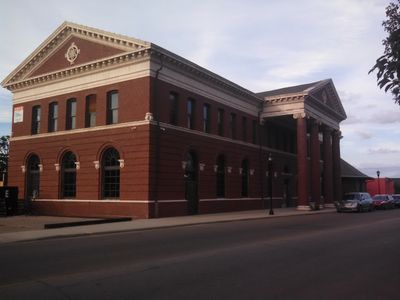Railroad Depot District, The Hoosier Bowery"

The Railroad Depot District comprises four city blocks. The district has also been called The Hoosier Bowery.” It is an architecturally significant group of 19th and early 20th century commercial and industrial buildings. The structures housed businesses that were important to the economic development of the city and in some cases, the county and southeastern Indiana.
When Richmond was settled in 1806 this land was acquired by Jeremiah Cox. In 1826 Cox sold his land to Charles and Elizabeth Starr, who were Quakers from Philadelphia. The Starrs then developed the area for commerce and industry. Charles Starr was instrumental in bringing the railroad to Richmond, donating the land for a train station. The Starr family also developed the Starr addition, Richmond’s first subdivision.
The neighborhood was laid out along the former Quaker Trace, now Fort Wayne Avenue. This road opened trade to Fort Wayne and was used in the Underground Railroad. Commerce was established with Cincinnati and it became a chief market for goods produced in Richmond. Until the coming of the railroad, goods were transported by wagon.
The district is the only commercial area of its size existing outside of Main Street. A few buildings date back to the mid-1860s, but the majority of the structures range from 1875 to 1910. The district is rich in architectural details with a concentration of Italianate motifs.
The Pennsylvania Railroad Station is the focal point of the district. It was designed in the office of Daniel Burnham, a world famous architect from Chicago. The building was built in 1902 and is Neo-Classical in style. The railroad station is the third such building on this site. Richmond was an important rail center with the Southwestern Line of the Pennsylvania Railroad headquartered here.
With the coming of the railroad a large number of buildings went up in the neighborhood. Along with the commercial interests, many of Richmond’s industries located here. Companies like Gaar, Scott and Company, and Dille-McGuire were international manufacturers.